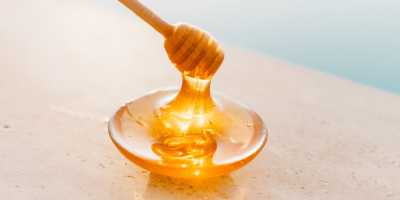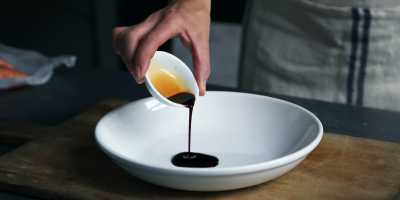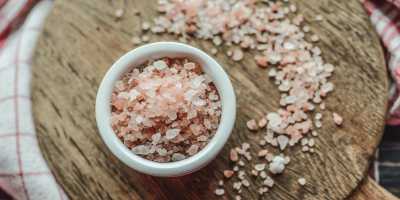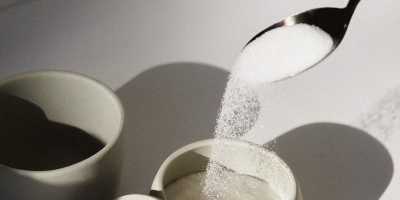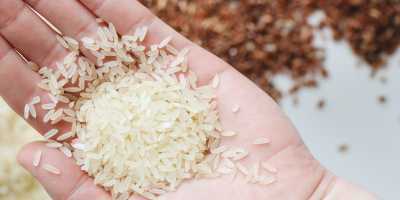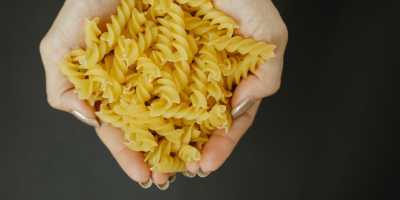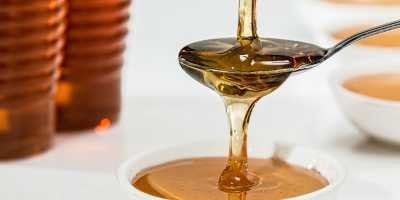10 Non-Perishable Foods That Will Never Expire
Whether you're a seasoned prepper or just someone who wants to be prepared for anything, knowing which foods can stand the test of time is essential. These durable pantry staples can survive even the harshest conditions.
In this article we'll introduce you to 10 foods that will never expire or spoil, including honey, maple syrup, vinegar, soy sauce, and more. We'll also provide you with tips on how to store them properly to ensure they stay fresh and flavorful for years to come.
Get ready to discover the ultimate survival foods that can help you thrive in any situation... from the apocalypse and beyond!
-
Honey
Honey is a natural preservative and has an indefinite shelf life. It may crystallize over time but this doesn't affect its safety or quality. Simply heat it up to liquefy it again.
Honey is an all-natural sweetener produced by bees from the nectar of flowers. It has a high sugar content and low water content, which makes it an inhospitable environment for bacteria and other microorganisms to grow. As a result honey has an indefinite shelf life if stored properly in a cool, dry place away from direct sunlight and moisture.
Over time honey may crystallize or become more solid, which is a natural process that occurs when glucose molecules separate from the liquid in the honey. However, this doesn't affect the safety or quality of the honey. To liquefy crystallized honey simply place the jar in a warm water bath or microwave it in short intervals until it returns to its liquid state.
Honey is a versatile ingredient that can be used in a variety of dishes, including desserts, marinades, and dressings. It is also known for its health benefits, such as its antibacterial and anti-inflammatory properties.
Tips on storing and using honey
-
Store honey in a cool, dry place away from direct sunlight and moisture. This will help prevent it from crystallizing or becoming rancid.
-
Use a clean, dry spoon to scoop honey out of the jar to prevent contamination.
-
When using honey in baking, reduce the amount of liquid in the recipe by 1/4 cup for every cup of honey used.
-
Honey can be used as a natural cough suppressant. Mix a tablespoon of honey with warm water and lemon juice to soothe a sore throat.
-
Honey can also be used as a natural skincare ingredient. Mix a tablespoon of honey with a teaspoon of coconut oil and apply it to your face as a moisturizing mask.
-
-
Vinegar
Vinegar is highly acidic, which makes it inhospitable to bacteria and other microorganisms. It has an indefinite shelf life and can be used for a variety of purposes in cooking and cleaning.
Vinegar is a versatile ingredient that has been used for centuries in cooking and for medicinal purposes. It's made by fermenting ethanol with acetic acid bacteria, which produces acetic acid, the main component of vinegar.
Vinegar is highly acidic, and that gives it a sour taste and makes it a natural preservative. Its acidity also makes it a useful ingredient in cooking, where it can be used to tenderize meat, balance flavors, and add tang to sauces and dressings.
In addition to its culinary uses, vinegar can also be used for cleaning and disinfecting. Its acidic properties make it effective at breaking down grease and grime, removing stains, and killing bacteria and other microorganisms.
Tips on storing and using vinegar
-
Store vinegar in a cool, dark place, such as a pantry or cupboard, away from direct sunlight and heat sources. Avoid storing vinegar in metal containers, which can react with the acid and affect the flavor.
-
Use vinegar as a natural cleaner: mix equal parts vinegar and water in a spray bottle to clean countertops, floors, and surfaces. Add a few drops of essential oils for a fresh scent.
-
Add vinegar to the rinse cycle of your laundry to soften clothes and remove odors.
-
Use vinegar to remove stains: apply undiluted vinegar to stains on fabric, carpet, or upholstery and let it sit for 10-15 minutes before blotting with a clean cloth.
-
Use vinegar to freshen up your kitchen: boil a mixture of water and vinegar on the stove to remove cooking smells and grease from the air.
-
-
Salt
Salt is a natural preservative that has been used for centuries to preserve food. It has an indefinite shelf life and can be used to add flavor to a variety of dishes.
 Pink salt. Photo by monicore
Pink salt. Photo by monicoreSalt is an essential ingredient in cooking, and its uses go beyond just adding flavor to dishes. It also plays a critical role in preserving food by drawing out moisture and inhibiting the growth of bacteria and other microorganisms that can cause spoilage.
Salt is often used in curing meats, fish, and vegetables, as well as in fermenting foods like sauerkraut and pickles. In addition to its preservative properties, salt can also enhance the texture and color of food, and balance out sweetness and acidity.
However it's important to consume salt in moderation, as excessive intake has been linked to high blood pressure and other health issues. The recommended daily intake of salt is no more than 2,300 mg per day for most adults.
Tips on storing and using salt
-
Store salt in a cool, dry place in an airtight container to prevent moisture and clumping.
-
Use salt to season food: salt can enhance the flavor of meats, vegetables, and grains. However, it's important to use it in moderation and not over-salt dishes.
-
Use salt to preserve food: salt can be used to preserve meats, fish, and vegetables by drawing out moisture and inhibiting the growth of bacteria and other microorganisms.
-
Use different types of salt for different purposes. For example, fine-grained table salt is best for baking and cooking, while coarse kosher salt is ideal for seasoning meats and vegetables.
-
Experiment with different types of salt to add unique flavors to your dishes. Some types of salt, such as sea salt or Himalayan salt, have a distinct taste and texture.
-
Be mindful of your salt intake. While salt is an important ingredient in cooking, excessive intake can lead to health problems like high blood pressure. Try using other seasonings like herbs and spices to add flavor to dishes without relying solely on salt.
-
-
Sugar
Like salt, sugar is a natural preservative that has an indefinite shelf life. It can be used to sweeten a variety of dishes and drinks.
In addition to its sweetening properties, sugar can also enhance the texture and appearance of baked goods like cakes, cookies, and pastries. It helps to create a tender crumb, caramelizes to create a golden-brown crust, and adds volume to baked goods.
Sugar also has a variety of culinary uses beyond baking, such as in marinades, sauces, and dressings.
Note that consuming excessive amounts of sugar has been linked to health problems like obesity, diabetes, and heart disease. That's why it's important to consume sugar in moderation and to choose natural sources of sugar, such as fruits and honey, whenever possible.
Tips on storing and using sugar
-
Use sugar to sweeten beverages and desserts. Sugar can be used to sweeten tea, coffee, smoothies, and a variety of desserts like cakes, cookies, and pastries.
-
Store sugar in a cool, dry place in an airtight container to prevent moisture and clumping. Brown sugar can be stored in an airtight container or a resealable plastic bag.
-
Experiment with different types of sugar. White granulated sugar is the most commonly used type of sugar, but there are many other types available, such as brown sugar, powdered sugar, and turbinado sugar. Each type has its own unique flavor and texture.
-
Be mindful of your sugar intake. While sugar is a natural ingredient, consuming too much of it can lead to health problems like obesity, diabetes, and tooth decay. Try using natural sweeteners like honey, maple syrup, or dates as a healthier alternative to sugar.
-
Use sugar in combination with other ingredients to create different textures and flavors. For example, sugar can be combined with butter to create a creamy frosting or with fruit to create a sweet and tart compote.
-
-
Rice
Rice has a very long shelf life, up to several years if stored properly. It can be used in a variety of dishes and is a staple food in many cultures.
Rice is a versatile food that can be used in many different dishes, from sushi to stir-fries to risotto. It comes in many different varieties, including white rice, brown rice, wild rice, and more. Rice is a staple food in many cultures around the world and is an important source of carbohydrates, fiber, and other nutrients. When storing rice, it's important to keep it in a cool, dry place in an airtight container to prevent moisture and insects from getting in. It's also important to rinse rice thoroughly before cooking to remove any excess starch and improve its texture.
Tips on storing and using rice
-
Store rice in an airtight container in a cool, dry place. This will help prevent moisture and pests from getting in.
-
If you're storing rice for a long period of time, consider adding an oxygen absorber packet to the container to help keep it fresh.
-
When cooking rice, use a ratio of 1 part rice to 2 parts water for white rice and 1 part rice to 2.5 parts water for brown rice.
-
Rinse rice thoroughly before cooking to remove any excess starch and improve its texture.
-
To add flavor to rice, consider cooking it in broth instead of water or adding herbs and spices to the cooking water.
-
Leftover rice can be stored in the fridge for up to 4 days or in the freezer for up to 6 months. Reheat it in the microwave or on the stovetop with a little bit of water or broth to prevent it from drying out.
- Remember that rice water has fascinating and unknown properties that can benefit your health and beauty. So, don't discard it before discovering them!
-
-
Alcohol
Alcohol, including wine, beer, and spirits, can have a long shelf life if stored correctly, although the taste and quality may deteriorate over time. Distilled spirits like whiskey, rum, vodka, gin, and tequila can last for many years, with some aging well and developing complex flavors and aromas.
 Photo by Kelly
Photo by KellyWhen it comes to aging spirits, there are a few key factors to consider. One important factor is the type of barrel in which the spirit is aged, as different types of wood can impart different flavors and aromas. Additionally the climate and temperature conditions in which the spirit is aged can also impact its flavor and quality.
For example, spirits aged in a cooler environment may develop more slowly and have a more delicate flavor, while those aged in a warmer climate may have a bolder, more robust flavor. It's also worth noting that the aging process doesn't necessarily make a spirit better; in some cases, a young, fresh spirit may be preferred over an aged one.
Ultimately, the best way to determine whether a particular spirit benefits from aging is to taste it over time and make note of any changes in flavor and aroma.
Tips on storing alcohol
-
Store wine in a cool, dark place, away from light and heat sources.
-
Beer should be stored in a cool, dark place, ideally at a temperature between 35-45°F.
-
Spirits should be stored in a cool, dark place, away from direct sunlight and heat sources. They should be kept in a sealed container, such as their original bottle or a decanter with a tight-fitting stopper.
-
If you're unsure whether a spirit has gone bad, look for any changes in color, smell, or taste. If it smells or tastes off, it's best to dispose of it.
-
If you're aging a spirit, store it in a cool, dark place and avoid exposing it to temperature changes or vibrations. It's also important to make sure the container is airtight to prevent oxidation.
-
-
Dried pasta
Dried pasta, such as spaghetti, macaroni, and penne, has an indefinite shelf life if stored properly in a cool, dry place. It can be used in a variety of dishes and is a staple food in many cultures.
 Photo by Klaus Nielsen
Photo by Klaus NielsenDried pasta is a versatile and convenient ingredient that can be used in a wide range of dishes, from simple and comforting pasta dishes to more complex and sophisticated recipes.
If stored properly, dried pasta can be a versatile and convenient ingredient that can be used to make a variety of delicious dishes.
When it comes to storing dried pasta, it is important to keep it in a cool, dry place to prevent moisture from affecting its quality. Moisture can cause the pasta to clump together, which can affect its texture and cooking time.
Tips on storing dried pasta
-
Store dried pasta in an airtight container or resealable plastic bag to prevent moisture and air exposure.
-
Keep dried pasta away from direct sunlight to prevent any discoloration.
-
Label the container or bag with the purchase or expiration date to keep track of its age.
-
Do not store cooked pasta and dried pasta together as the moisture from the cooked pasta can affect the dried pasta's texture and quality.
-
If you live in a humid environment, consider storing the dried pasta in the refrigerator or freezer to prevent moisture from affecting its quality.
-
-
Dried beans
Dried beans, such as kidney beans, black beans, and chickpeas, have an indefinite shelf life if stored properly. They can be used in a variety of dishes and are a good source of protein and fiber.
Soaking the beans overnight can help reduce their cooking time and make them easier to digest. Dried beans can be used in a variety of dishes such as soups, stews, salads, and casseroles, making them a versatile and nutritious ingredient to have in your pantry.
Proper storage of dried beans is crucial to prevent moisture from affecting their quality and extending their shelf life. Below are some tips for storing dried beans.
Tips on storing and using dried beans
-
Store dried beans in an airtight container or a resealable plastic bag in a cool, dry place to prevent moisture and air exposure.
-
Inspect the beans before cooking, removing any debris or broken pieces, and rinse them thoroughly.
-
Soak the beans overnight to reduce their cooking time and make them easier to digest.
-
When cooking beans, do not add salt or acidic ingredients, such as tomatoes or vinegar, until the beans are tender, as these can toughen the beans and increase their cooking time.
-
Leftover cooked beans can be stored in an airtight container in the refrigerator for up to five days or frozen for later use.
-
Use dried beans in a variety of dishes, such as soups, stews, salads, and casseroles, to add flavor and nutrition to your meals.
-
-
Soy sauce
Soy sauce is a fermented condiment made from soybeans, wheat, and salt. It has a high salt content and an indefinite shelf life if stored properly. It can be used to add flavor to a variety of dishes.
 Photo by Gustavo Fring
Photo by Gustavo FringProper storage is important for maintaining the quality and flavor of soy sauce. It is recommended to store soy sauce in a cool, dry place away from direct sunlight. Exposure to heat, light, and air can cause the soy sauce to lose its flavor and color.
Soy sauce can be used as a seasoning for a variety of dishes, such as stir-fries, marinades, dressings, and dipping sauces, to add a savory and umami flavor. A little goes a long way, so it is important to use it in moderation to avoid overpowering the dish. For a lower-sodium alternative, choose a reduced-sodium or no-salt-added soy sauce.
Tips on storing and using soy sauce
-
Store soy sauce in a cool, dry place away from direct sunlight to prevent heat, light, and air exposure.
-
Once opened, store soy sauce in the refrigerator to prevent spoilage and extend its shelf life.
-
Check the expiration date before using soy sauce to ensure its freshness.
-
Soy sauce can be used as a seasoning for a variety of dishes, such as stir-fries, marinades, dressings, and dipping sauces, to add a savory and umami flavor.
-
-
Maple syrup
Maple syrup is a natural sweetener made from the sap of maple trees. It has a high sugar content and an indefinite shelf life if stored properly. It can be used to sweeten a variety of dishes and is a popular topping for pancakes and waffles.
 Photo by Pixabay
Photo by PixabayProper storage is important for maintaining the quality and freshness of maple syrup. Once opened is recommended to store maple syrup in the refrigerator to prevent spoilage and extend its shelf life.
Tips on storing and using maple syrup
-
Store maple syrup in a cool, dry place away from direct sunlight and heat sources to maintain its quality and freshness.
-
Once opened, store maple syrup in the refrigerator to prevent spoilage and extend its shelf life.
-
Maple syrup may crystallize over time, but this does not affect its quality or safety. To dissolve the crystals, place the maple syrup container in a bowl of hot water or microwave it for a few seconds.
-
Use maple syrup as a sweetener for a variety of dishes, such as oatmeal, yogurt, baked goods, and desserts.
-
Maple syrup is a popular topping for pancakes, waffles, and French toast. It can also be used as a glaze for meats and vegetables or as a marinade for salmon or tofu.
-
For a lower-sugar alternative, use maple syrup in moderation or consider using a sugar substitute such as stevia or monk fruit sweetener.
-
While the 10 foods covered in this article are certainly impressive in their durability, it's worth noting that there are other foods that can also last a long time with proper storage. Chocolate, coffee, and olive oil are just a few examples of foods that can last for months or even years when stored correctly. It's always a good idea to do some research on the specific food item you want to store to ensure that you're storing it properly and maximizing its shelf life.
-
Chocolate
Chocolate has a long shelf life of up to two years if stored properly in a cool, dry place away from direct sunlight and strong odors. But chocolate may develop a white film on the surface called bloom, which is caused by changes in temperature and humidity, but it is still safe to eat.
-
Coffee
Coffee can last for up to six months to a year if stored properly in an airtight container in a cool, dry place away from direct sunlight and moisture. However its flavor and aroma may deteriorate over time, and it is best to use it within a few weeks of the roast date.
-
Olive oil
Olive oil has a shelf life of up to two years if stored properly in a cool, dark place away from heat and light. Sadly this "liquid gold" (as Spanish people often call it) can become rancid over time, especially if exposed to oxygen, heat, or light. It is best to use it within a year of the harvest date.
While these foods may be incredibly long-lasting it's important to exercise caution when consuming them. Even the most durable food items can spoil or become contaminated if not stored properly. Be sure to inspect the food carefully before consuming it, checking for any signs of spoilage, including worms, insects, bad smells, or strange textures. When in doubt, it's better to err on the side of caution and discard the food.
 Photo by Criativithy
Photo by Criativithy
We hope you've enjoyed learning about these 10 incredibly durable foods and the tips for storing them. Remember to always use common sense when storing and consuming food, and don't be afraid to ask for advice if you're unsure about the safety of a particular item. With the right knowledge and preparation you can ensure that you have a long-lasting supply of food on hand, no matter what the future may bring.

